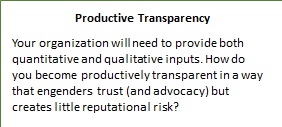
Sustainability – the organized response to climate risk – is ushering in a new economic reality where companies will be challenged to drive growth while reducing emissions. This is not an environmental view of what should happen or what companies should do, this is a foundational economic point of how regulatory and market forces will reshape companies’ strategies and operations.
 We find ourselves in an awkward economic transitional moment when regulations and market forces are coming into view but have not yet fully impacted the market.
We find ourselves in an awkward economic transitional moment when regulations and market forces are coming into view but have not yet fully impacted the market.
Every company will need to adjust to the profound impact of sustainability forces – and most will need to do that in a transitional period that is disruptive, uncertain, and when the deep entanglement of our global economy creates complex interdependencies.
 Most companies are not yet in motion: EY noted that 95% of UK-listed firms had not disclosed detailed transition plans — despite 80% saying they were committed to becoming net zero by 2050. Other research shows that 75% of companies have not taken material steps to fold sustainability into their business. These are early days and big decisions lie ahead.
Most companies are not yet in motion: EY noted that 95% of UK-listed firms had not disclosed detailed transition plans — despite 80% saying they were committed to becoming net zero by 2050. Other research shows that 75% of companies have not taken material steps to fold sustainability into their business. These are early days and big decisions lie ahead.
 Pragmatic and Proportional
Pragmatic and Proportional
The efforts to address climate change represent a profound change to how economies and businesses work as sustainability is integrated into core operations. They also challenge individual companies to respond- companies with finite resources, sometimes little in-house sustainability expertise, and constant financial pressures.
Adding to the complexity, companies need to build strategies in a transitional period as regulations come into effect, when consumers have not yet shifted buying habits, when reputation is not yet fully vulnerable to public scrutiny and comparability, and when downstream customers have not placed pressure on their respective supply chains.
So, what strategies make sense in this transitional uncertainty? The headline is that companies should take on strategies proportional to risk and opportunity, timed to stay in front of market pressures, and integrated into core operations to gain efficiency, velocity, and scale.
In the face of an uncertain economy, most people are wondering, what is the most efficient way to get started? Here are four steps your organization can take to prepare for a sound sustainability strategy:
- Gain a deeper understanding of the regulatory, technical and measurement, market, and financial components of sustainability
- Assess and forecast risk, including customer, measurement, financial, and reputational risk to gain a clear view of what is really in play
- Develop a portfolio approach to understand where emission reduction opportunities exist across Scope 1, 2, and 3 how they may impact financials (this can include product choices)
- Identify the initiatives that deliver to sustainability while generating financial benefit to build muscle, momentum, and possibly early market advantage.
 The Immediate Path Forward
The Immediate Path Forward
The first message is start now: it is the wisest path to conserve resources and the most efficient method to get in front of risk. Deferring planning and action unnecessarily increase risks and puts you in a defensive position where you are forced to spend unproductively to reverse losses. Time gives you the information and flexibility to determine what is the most pragmatic and proportional strategy for you and what levers exist to create financial value along the way.
This was never going to be easy – especially in a transitional period.
Cairnbridge Advisors is here to guide you with expertise, clear methodologies, and practical tools, using a pragmatic and proportional approach to ensure a graceful transition.

